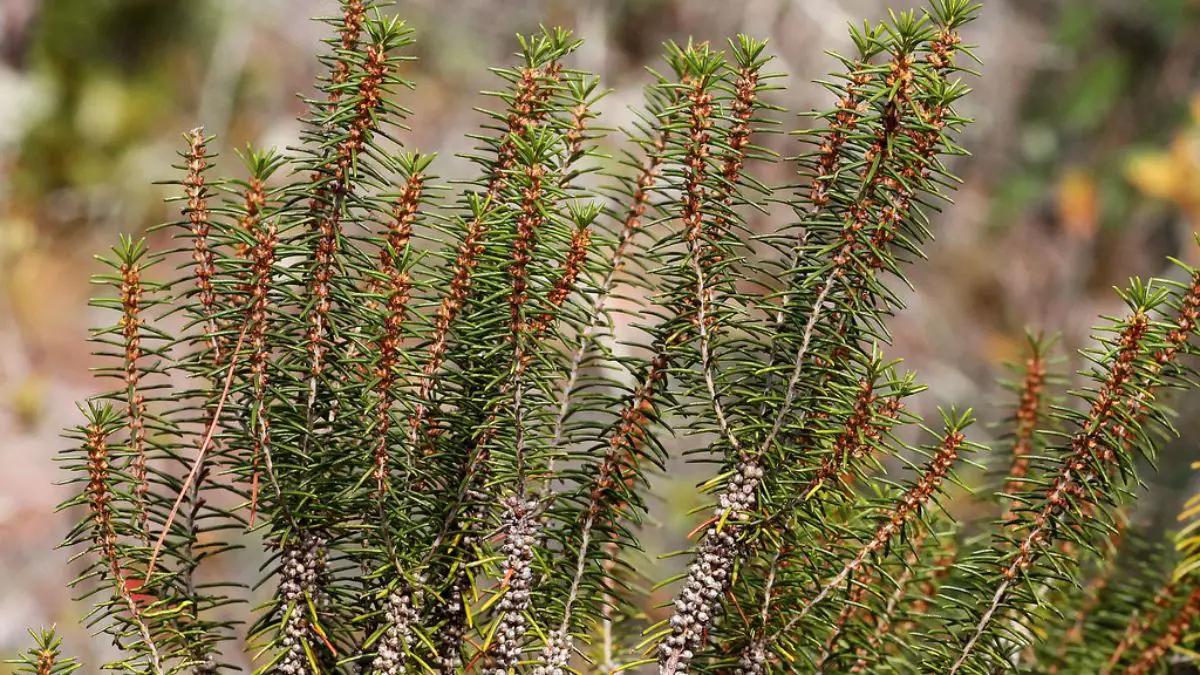Wondering why your vibrant rosemary plant, like other herbs, is suddenly turning brown due to root rot? The lush green leaves you once admired now appear wilted and discolored, leaving you puzzled. Don't fret - understanding the causes behind this color transformation can help revive your beloved herb. Factors like overwatering, insufficient sunlight, or even pest infestations could be at play, causing your rosemary to lose its luster. By identifying the root cause of the issue, you can take targeted steps to restore your plant to its former glory. Stay tuned as we delve into common reasons like root rot why rosemary plants turn brown, explore effective solutions to bring them back to life, and address their water needs.
Understanding Rosemary Browning
Signs of Browning on Rosemary Leaves
Rosemary plants turning brown can be a common issue for many gardeners. Brown spots or patches on the leaves are often the first sign of trouble. These spots may start small but can quickly spread if not addressed promptly.
Importance of Early Detection
Early detection is crucial when it comes to rosemary browning. By catching the issue early, you can take immediate action to remedy the problem before it escalates. Regularly inspecting your potted rosemary plant for any signs of browning can help maintain its health.
Impact on Plant Health
The browning of rosemary leaves can have a significant impact on the overall health of the plant. When left unchecked, browning can weaken the plant, making it more susceptible to diseases and pests. excessive browning can hinder the plant's ability to photosynthesize effectively, affecting its growth and vitality.
Identifying Brown Spot Causes
Fungal Diseases
Fungal diseases are a common culprit behind brown spots on rosemary plants. They thrive in humid conditions, causing discoloration on the leaves. Leaf spots are a telltale sign of fungal infections.
Fungal infections can spread rapidly, leading to extensive damage if not addressed promptly. To prevent these issues, ensure proper ventilation and avoid overhead watering.
Bacterial Infections
Bacterial infections can also result in brown spots on rosemary leaves. These infections often manifest as dark lesions surrounded by yellow halos. Bacteria enter plants through wounds or cuts, so be cautious during pruning.
Once bacterial infections take hold, they can be challenging to eradicate. Remove infected leaves and stems promptly to prevent further spread within the plant.
Environmental Stressors
Environmental stressors, such as excessive heat, cold, or drought, can trigger brown spots on rosemary plants. Insufficient sunlight or over-fertilization can also weaken the plant's defenses against diseases.
Ensure your rosemary plant receives adequate sunlight and water regularly but avoid overwatering. Maintain proper spacing between plants to promote air circulation and reduce humidity levels.
Addressing Fungal Diseases
Symptoms Overview
Powdery mildew and botrytis blight are common fungal diseases that can cause rosemary plants to turn brown. Powdery mildew appears as a white powdery substance on the leaves, while botrytis blight causes gray mold to form on the plant.
Fungal infections often lead to browning of rosemary leaves, affecting the overall health and appearance of the plant. These diseases thrive in humid environments, making proper ventilation essential for preventing their spread.
Combatting Fungal Diseases
To address fungal diseases like powdery mildew and botrytis blight, it is crucial to take prompt action. One effective method is to prune affected areas of the plant using sterilized tools to prevent further contamination.
Applying fungicides specifically formulated for treating powdery mildew and botrytis blight can help control the spread of these diseases. Ensuring proper air circulation around the plant by spacing them adequately can reduce humidity levels, creating an unfavorable environment for fungal growth.
Timely Intervention Importance
Early detection of fungal infections is key to saving a browned rosemary plant. Regularly inspecting your plants for any signs of powdery mildew or botrytis blight allows for immediate treatment, increasing the chances of recovery.
Neglecting fungal diseases can result in severe damage to the plant, potentially leading to stunted growth or even death. By addressing these issues promptly, you can safeguard the health and vitality of your rosemary plants.
Treating Bacterial Infections
Understanding Differences
Bacterial infections in rosemary plants differ from fungal issues. Bacteria cause brown spots by attacking the plant's tissues directly, unlike fungi that feed on organic matter.
Identifying Symptoms
Symptoms of bacterial infections include dark, water-soaked lesions on leaves and stems. These lesions often have a foul smell, indicating bacterial blight.
Implementing Treatments
To combat bacterial infections, prune infected parts immediately to prevent further spread. Use sterilized tools to avoid transferring bacteria.
Targeted Solutions
Applying copper-based fungicides can help control bacterial blight effectively. These products create a protective barrier against bacteria on the plant's surface.
Preventive Measures
Ensure proper drainage and avoid overhead watering to reduce moisture levels, creating an unfavorable environment for bacterial growth.
Managing Environmental Stress
Optimal Conditions
To prevent brown spots on your rosemary plant, ensure it is in an environment with suitable humidity levels. Rosemary thrives in areas with moderate humidity, typically around 40-50%.
Create a well-draining soil mix for your rosemary plant to avoid issues related to waterlogging. Poor drainage can lead to root rot, causing the leaves to turn brown due to lack of oxygen.
Maintain consistent watering practices, allowing the soil to dry out slightly between watering sessions. Overwatering can suffocate the roots and hinder nutrient absorption, resulting in brown patches on the leaves.
Climate Considerations
Consider your local climate when growing rosemary plants. They prefer warmer temperatures and are best suited for USDA hardiness zones 7-10. Extreme weather conditions can stress the plant, leading to browning of the foliage.
During vacations or extended periods away from home, ensure your rosemary plant receives adequate care. Extreme conditions such as high temperatures or low humidity can cause stress and result in brown leaves upon your return.
Fragrance and pH Levels
Rosemary plants emit a pleasant fragrance that not only adds to their appeal but also indicates their health. A strong, aromatic scent signifies that the plant is thriving and receiving adequate care.
Check the pH levels of the soil where your rosemary is planted. They prefer slightly acidic soil with a pH range between 6.0 and 7.0 for optimal growth. Imbalance in pH levels can lead to nutrient deficiencies and brown discoloration of the leaves.
Implementing Natural Remedies
Baking Soda
Baking soda can be a powerful ally in treating brown spots on your rosemary plant. Mix a teaspoon of baking soda with water and spray it on the affected leaves.
This natural remedy helps combat fungal infections, which are often the culprit behind brown patches on herb plants. The alkaline properties of baking soda create an inhospitable environment for fungi to thrive.
Neem Oil
Neem oil, derived from the seeds of the neem tree, is another effective solution for addressing browning in rosemary plants. Dilute neem oil in water and apply it to the affected areas.
The antibacterial properties of neem oil help fight off harmful bacteria that may be causing the browning of your herb plant. Neem oil acts as a natural insect repellent, safeguarding your plant from pests.
Benefits of Organic Solutions
Using organic remedies like baking soda and neem oil offers several advantages over chemical treatments. These natural solutions are gentler on plants, minimizing the risk of damage or stress to your rosemary.
Organic remedies also contribute to sustainable gardening practices, promoting a healthier ecosystem in your garden. By opting for natural alternatives, you reduce the reliance on synthetic chemicals that can have detrimental effects on the environment.
Promoting Plant Health
Implementing natural remedies not only addresses immediate issues like browning but also plays a crucial role in maintaining overall plant health. These solutions provide essential nutrients to your rosemary, supporting its growth and vitality.
Pruning and Soil Management
Pruning
Pruning is crucial for rosemary plant health, especially when dealing with brown spots. Trimming affected areas helps prevent disease spread to the rest of the plant.
Regularly prune any discolored or damaged stems to promote new growth and maintain a healthy appearance.
Soil Management
Maintaining proper soil conditions is essential for a thriving rosemary plant. Ensure adequate drainage to prevent issues like root rot, often caused by overwatering.
Regularly check the soil's moisture levels and adjust your irrigation schedule accordingly to avoid both underwatering and overwatering.
Sanitation Practices
Maintaining cleanliness around your rosemary plant is key to preventing brown spots. Regularly remove any dead leaves or debris from the base of the plant to improve air circulation around the stems.
Avoid overcrowding plants in your garden bed, as this can hinder air circulation and create a favorable environment for disease development.
Importance of Fertilizing
Applying a balanced fertilizer specifically formulated for herbs like rosemary can provide essential nutrients for optimal growth. Consult experienced gardeners or local nurseries for advice on suitable fertilizers.
Ensure that you fertilize your rosemary plant according to the recommended schedule, typically during the growing season in spring and summer.
Preventing Future Browning
Proper Placement
When it comes to preventing your rosemary plant from turning brown, proper placement is crucial. Ensure your plant receives adequate sunlight, preferably around six to eight hours a day. Avoid exposing it to direct sunlight for extended periods, as this can lead to browning.
Regular Inspections
Regularly inspecting your rosemary plant is essential in detecting early signs of trouble. Look out for any changes in color or texture of the leaves, as these could indicate underlying issues causing browning. By catching problems early, you can take prompt action to prevent further damage.
Adequate Watering and Drainage
Maintaining the right balance of watering is key to preventing browning. Rosemary plants prefer soil that is well-drained, so ensure that excess water can easily flow out of the pot. Overwatering can lead to root rot, which manifests as brown spots on the plant's foliage.
Humidity Control
Controlling the humidity levels around your rosemary plant can help prevent browning. These plants thrive in moderately humid conditions, so consider using a humidifier if you live in a dry climate. Avoid placing your rosemary near drafty areas or vents that can cause fluctuations in humidity levels.
Pests and Diseases Management
Pests and diseases can also contribute to your rosemary plant turning brown. Keep an eye out for common pests like spider mites or powdery mildew, which can affect the health of your plant. Use natural remedies or insecticidal soap to manage pest infestations without harming your plant.
Summary
Now that you understand why your rosemary plant might be turning brown and have learned how to identify and address the causes behind it, you can take proactive steps to ensure its health and vibrancy. By implementing the strategies mentioned, such as treating fungal diseases, managing environmental stress, and using natural remedies, you can help your rosemary thrive. Remember to regularly prune and manage the soil to prevent future browning issues. Your attentiveness and care will make a significant difference in the well-being of your plant.
Take action today by applying these remedies to your rosemary plant. With proper care and attention, you can enjoy a lush and green rosemary plant that not only enhances your garden but also provides fresh herbs for your culinary adventures.
Frequently Asked Questions
Why is my rosemary plant turning brown?
Rosemary plants can turn brown due to various reasons, including fungal diseases, bacterial infections, environmental stress, or improper soil management. Identifying the specific cause through careful observation will help you take appropriate steps to address the issue promptly.
How can I prevent my rosemary plant from browning further?
To prevent future browning of your rosemary plant, ensure proper soil drainage, adequate sunlight exposure, and appropriate watering practices. Regular pruning to remove affected areas and implementing natural remedies like neem oil can also help maintain the plant's health.
What are some natural remedies to treat browning in rosemary plants?
Natural remedies such as neem oil spray, a mixture of water and baking soda for fungal issues, or a diluted hydrogen peroxide solution for bacterial infections can be effective in treating browning in rosemary plants. These remedies are eco-friendly and gentle on the plant.
Can environmental stress cause browning in rosemary plants?
Yes, environmental stress factors like extreme temperatures, insufficient sunlight, overwatering, or underwatering can lead to browning in rosemary plants. Monitoring these conditions and providing a suitable environment for your plant will help prevent stress-related issues.
Is pruning essential for managing brown spots on rosemary plants?
Pruning plays a crucial role in managing brown spots on rosemary plants by removing affected areas and promoting new growth. It helps improve air circulation around the plant and prevents the spread of diseases. Regular pruning as part of maintenance can enhance the overall health of your rosemary plant.
Image Source: Paid image from CANVA





